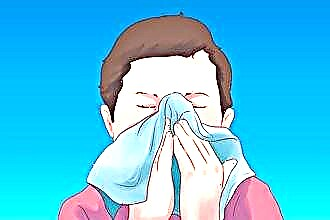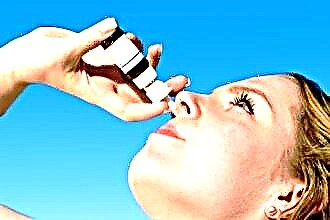Physiological intake of air through the nasopharynx prevents irritation and inflammation of the mucous membrane of the lower respiratory tract. By passing through the nasal passages, it is warmed and cleansed. When congestion appears, not only the respiratory system suffers, but the general condition of a person. If a child has a stuffy nose, he becomes lethargic, inattentive, capricious, which is fraught with serious problems.
The reasons why a child's nose does not breathe are quite varied. They relate to both environmental factors and diseases of internal organs, in most of the ENT region.
The most common reasons

To understand why the baby cannot breathe, parents need to answer some questions. They relate to the period that preceded the deterioration of the condition:
- where did he spend time? For example, in a dusty room or on a sandy beach;
- Did you communicate with a sick peer? This can result in viral infections, nasal congestion and difficulty in nasal breathing. In this case, the child begins to breathe through the mouth;
- what did you eat and drink? Perhaps new foods have appeared in the diet that can provoke the development of an allergic reaction when the nose does not breathe at all;
- what diseases did you suffer? Sometimes residual swelling of the nasal mucosa can persist for more than a week after the end of the acute period of infectious, allergic rhinitis. Over time (about a week), breathing through the nose is restored, and it becomes much easier for the child to sleep;
- could you be overcooled? Often a precursor to a cold is sneezing, nasal congestion, which causes the child to breathe through the mouth;
- have you had similar symptoms before? If a child has a constant nasal congestion, it is worth looking for an allergic factor. To accurately establish the cause of the disease, it is necessary to analyze the frequency of occurrence of allergic symptoms and eliminate possible allergen from the environment of children;
- what drugs did you receive the day before? Particular importance should be given to nasal drops. Sometimes a child's nasal congestion can be an adverse drug reaction;
- Did close relatives have similar symptoms? Nasal congestion in children may be due to a genetic predisposition to the development of allergies, the occurrence of polyposis formations or adenoids.
Before taking the drug, you should definitely consult with a specialist and study the instructions (in particular, the section on indications, adverse reactions, contraindications, method of application).
Now let's look at the most common reasons why a child speaks through the nose.
Infection
In infants with natural feeding, the risk of infection with pathogenic microbes is much lower than in “artificial” babies. The fact is that with breast milk, immune components (immunoglobulins) enter the growing body, which help to resist infection. It is quite rare to see green snot in a one-year-old child, which is also due to the high level of immune defense.
With age, children begin to have more contact with the environment and their peers, which increases the risk of infection. A severe runny nose and nasal congestion may appear after inhaling viruses when talking to a sick person.
A runny nose goes through three stages:
- at the first stage, sneezing appears as a result of irritation of the nasopharyngeal mucosa, and also the child has a stuffy nose due to tissue swelling. As a result, the baby eats poorly, cannot breathe through his nose, sleep becomes restless, and in the morning the baby is moody and sleepy. Depending on the aggressiveness of the infectious agent, hyperthermia can fluctuate in the range of 37-39 degrees;
- in the second stage, nasal congestion increases. The child's runny nose progresses, there is a gundos and pronounced rhinorrhea. The sleeping baby has an open mouth, as the nose is completely clogged during sleep;
- after 4 days, the discharge becomes thick, acquire a yellowish tint. After the end of the weekly period, the volume of the snot gradually decreases. If a thick discharge turns green and does not stop for the second week, you should suspect sinusitis.
Usually, a runny nose lasts 1 to 2 weeks, after which breathing through the nose is restored and the condition of the children improves.
If the baby has a very stuffy nose, breastfeeding becomes impossible. When trying to clasp the nipple, the baby suffocates and begins to cry. In this case, for feeding, you must use a spoon or 20 minutes before a meal, instill a medicine for nasal congestion in children.
The nasal passages of a child at 1 year old can be instilled with Nazivin or Delufen.
Sinusitis
Activation of opportunistic flora or secondary bacterial infection occurs against the background of an untreated rhinitis or immunodeficiency. Inflammation of the mucous membrane of the paranasal cavities has the following symptoms:
 stuffy nose;
stuffy nose;- high fever;
- green snot;
- headache;
- soreness in the paranasal area;
- the baby is nasal due to swelling of the mucous membrane and a violation of the outflow of purulent secretions from the cavities.
When a child has a stuffy nose and snot, the general condition also suffers. He has severe malaise, poor appetite, restless sleep, apathy, irritability. He becomes inattentive, less active, and decreases in academic performance.
In children 3 years old, against the background of chronic sinusitis, physical and mental development may slow down. With a nasal congestion in a child, the internal organs do not receive enough oxygen, which is why their formation and functioning is impaired.
Allergic reaction
If a one-year-old child still has nasal congestion, a runny nose does not go away for a long time, it is necessary to exclude an allergic reaction. To do this, you need to see a doctor. Allergy is clinically manifested:
- sneezing;
- lacrimation;
- watery rhinorrhea;
- shortness of breath. If your baby breathes through his nose during the day and before bedtime, and a stuffy nose in the morning, a house dust mite may be the allergen. To make the nose passable again after sleep, it is enough to drip it with a nasal agent with an antihistamine effect (Delufen);
- swelling of the lips, eyelids, neck;
- shortness of breath;
- cough;
- skin rashes.
At 2 years of age, there is a risk of developing laryngospasm against the background of pronounced swelling of the vocal cords, which is due to the anatomical features of this zone.
So that the consumption of foods is not accompanied by allergic rhinitis, it is necessary to reduce the amount of citrus fruits, chocolate, strawberries, and various products with dyes in the child's diet.
Adenoids
At 4 years old, a child's nose may be clogged due to an increase in the nasopharyngeal tonsil. Adenoids are often diagnosed between the ages of 3-8 years. At an older age, the amygdala tissue undergoes atrophy and gradually decreases in volume.
Adenoids disrupt the airway function of the nasopharynx, which predisposes the onset of an inflammatory focus. As a result, the mucous membrane becomes edematous, and the child does not breathe through the nose.
 After general hypothermia, prolonged inhalation of cold air or viral infection, adenoiditis may develop. Clinically, the disease manifests itself:
After general hypothermia, prolonged inhalation of cold air or viral infection, adenoiditis may develop. Clinically, the disease manifests itself:
- severe swelling of the mucous membrane, as a result of which the child has a severely stuffy nose;
- subfebrile condition;
- discharge of a mucous, purulent nature;
- nasalness.
After all the symptoms of adenoiditis have passed, pathogenic microorganisms can persist in the tissues for a long time.Chronization of the infectious process is observed with immunosuppression, as well as in the presence of inflammatory foci in the ENT organs.
The acute form of the disease should go away in two weeks, otherwise the risk of complications increases. They are associated with inflammation and infection of the surrounding healthy tissue.
Prophylaxis
Keep in mind that environmental factors also affect nasal breathing. Irritation of the mucous membrane with smoke, dust or chemicals leads to its swelling, as a result of which the nose is blocked and there is no patency of the nasal passages.
If the child's nose does not breathe, it is necessary to remove all possible allergens, create a favorable microclimate in the children's room (humidity - 60%, temperature - 20 degrees), regularly carry out wet cleaning, ventilate the room, walk for at least three hours daily and normalize food.

 stuffy nose;
stuffy nose;

